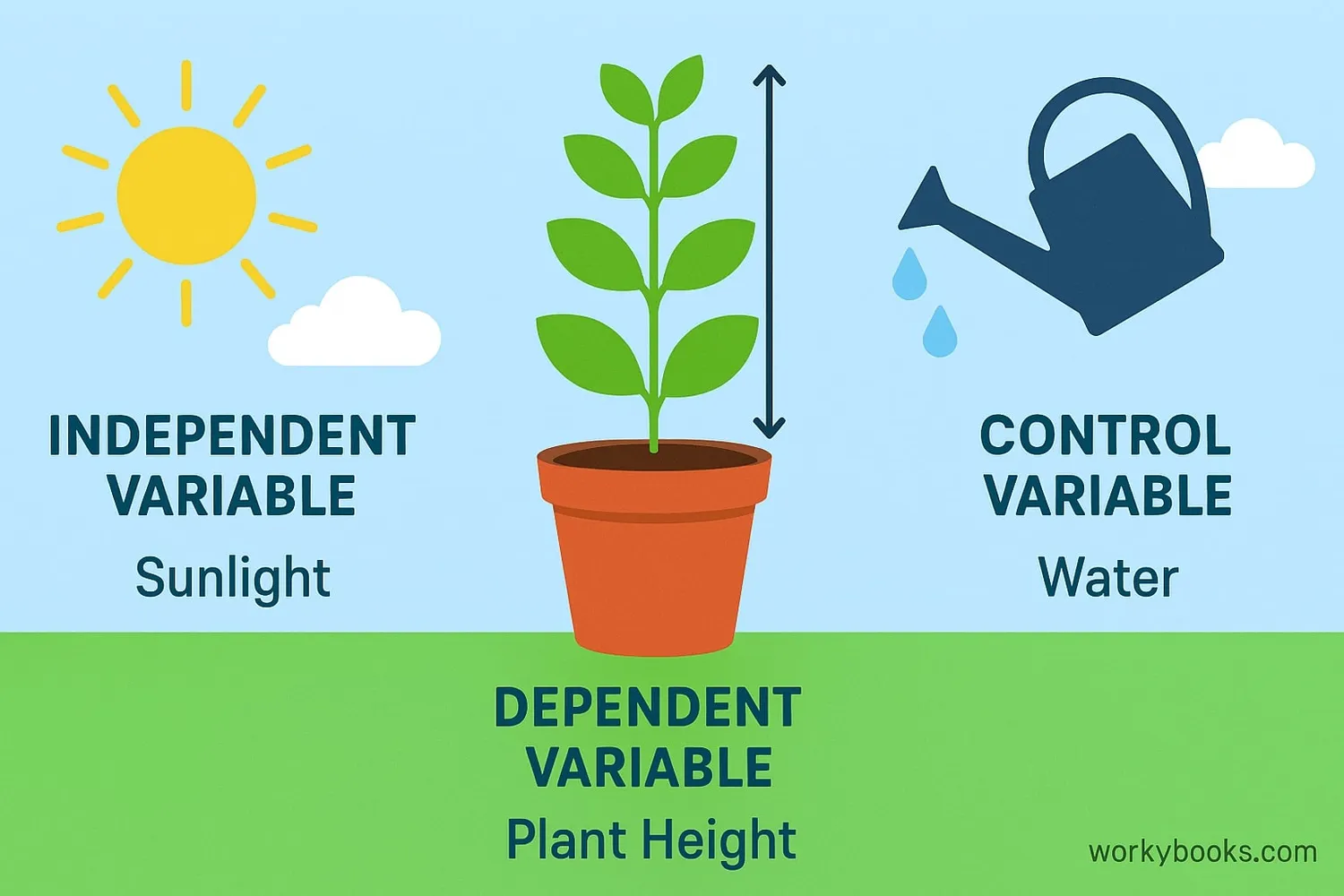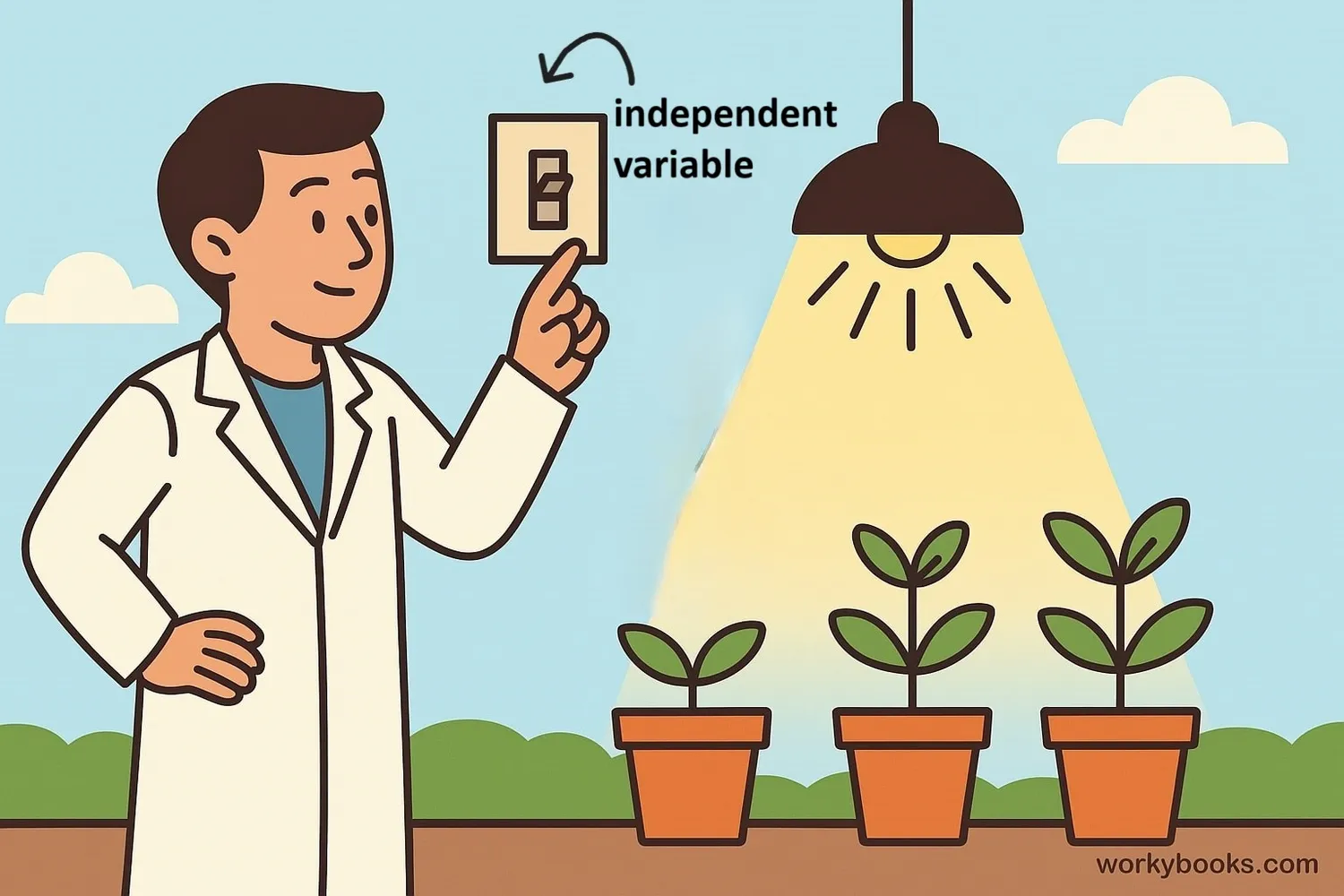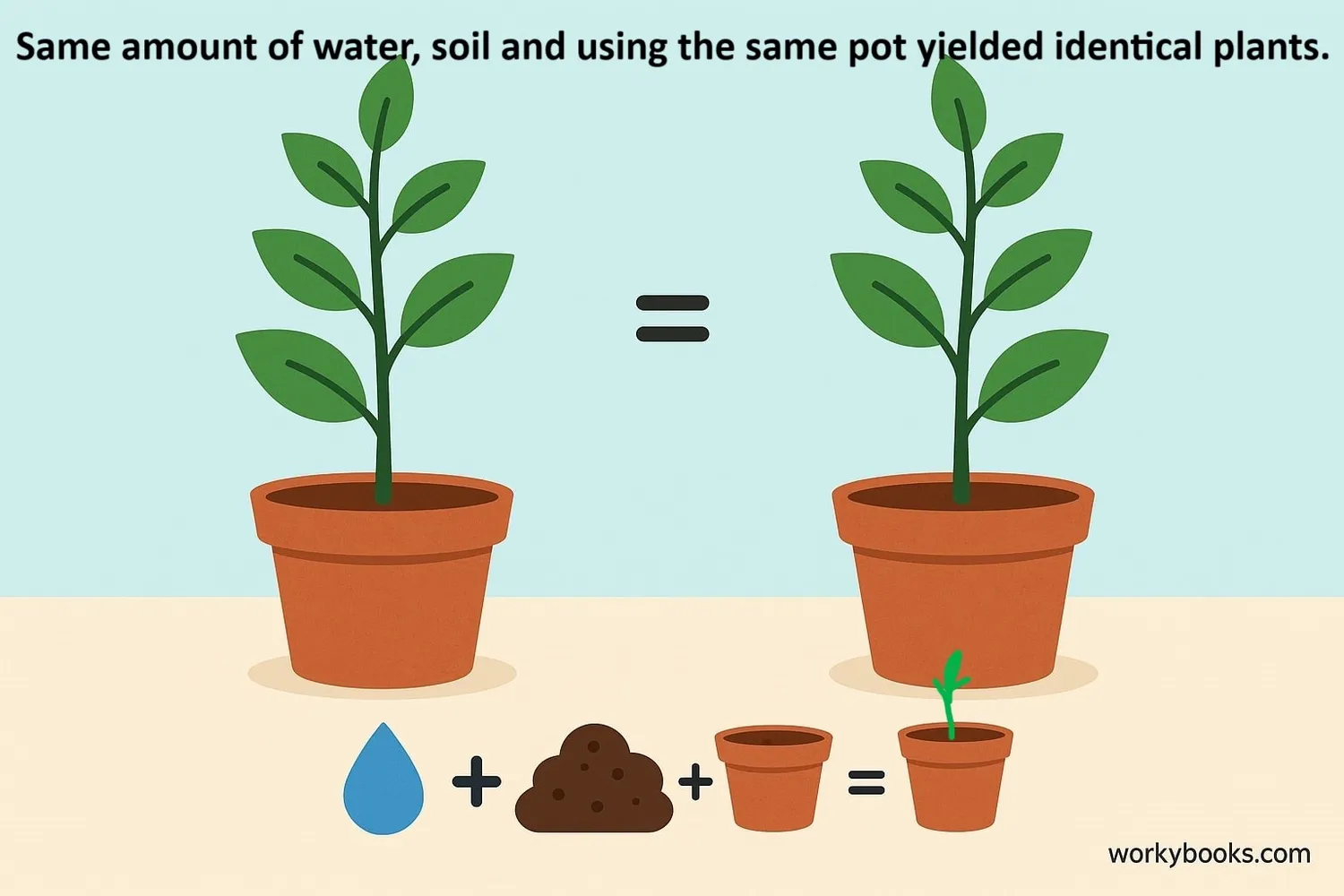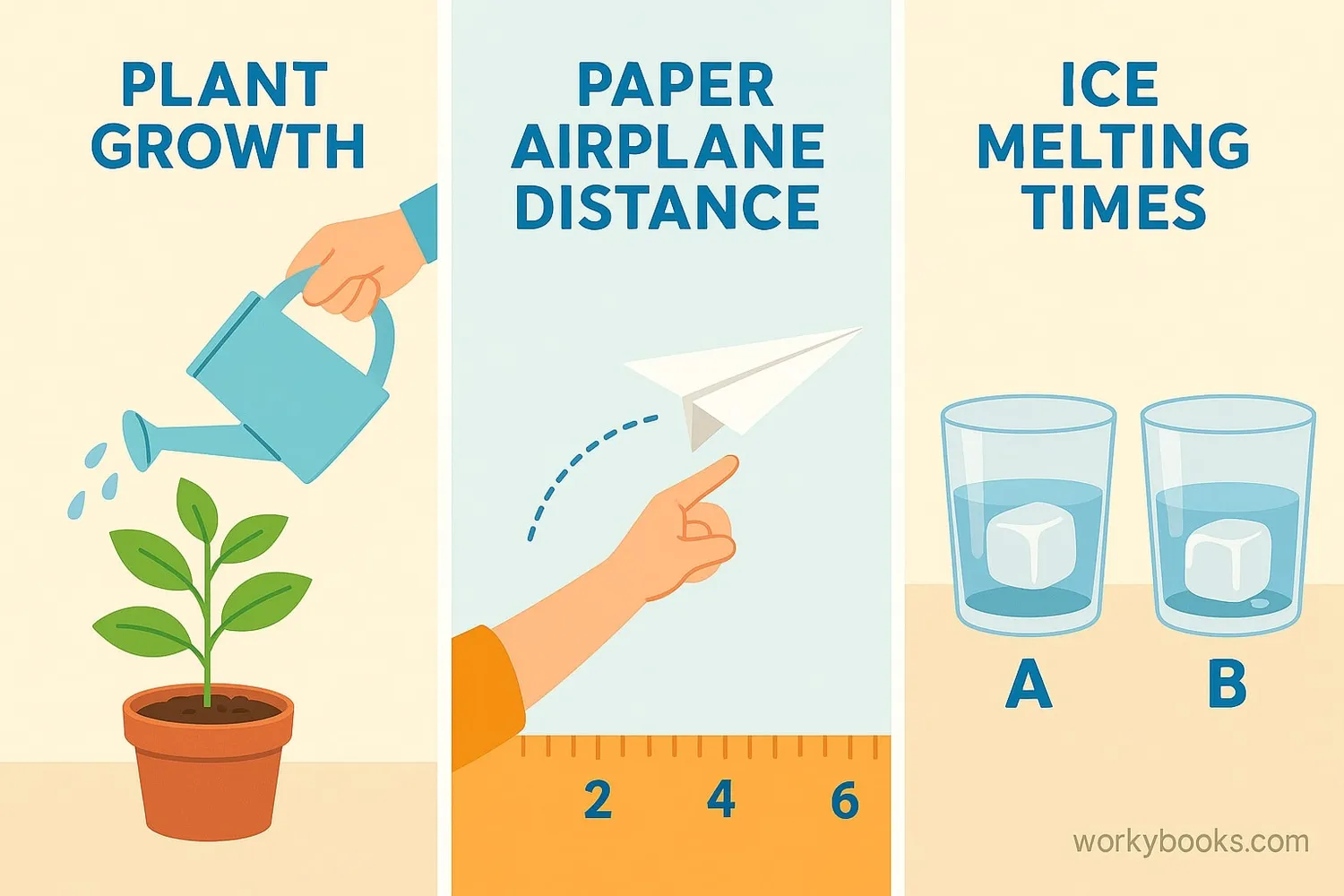Independent Variables - Definition, Examples, Quiz, FAQ, Trivia
Learn how scientists use variables in experiments with simple explanations and practice activities
What is a Variable?

In science and math, a variable is something that can change or be changed. Think of it like a box that can hold different values. Scientists use variables to test their ideas and discover how things work.
There are three main types of variables:
1. Independent Variable - What you change on purpose
2. Dependent Variable - What you measure
3. Control Variable - What you keep the same
Understanding variables helps scientists conduct fair experiments and discover how things in our world are connected.
Key Concept
Variables are the building blocks of experiments. They help us ask questions like "What happens if I change this?"
Independent Variable

The independent variable is what the scientist changes on purpose in an experiment. It's the "cause" that we think might create an effect.
Think of it as the input that we control. For example:
Independent Variable Facts
- Also called the "manipulated variable" or "explanatory variable"
- Placed on the x-axis of graphs
- There's usually only one independent variable in a simple experiment
- Examples: Amount of sunlight, type of soil, temperature
Remember
You can remember independent variables as the "I change" variable because the scientist decides to change it.
Dependent Variable

The dependent variable is what we measure or observe in an experiment. It's the "effect" that might be caused by the independent variable.
Think of it as the output that depends on what we changed. For example:
Dependent Variable Facts
- Also called the "responding variable" or "outcome variable"
- Placed on the y-axis of graphs
- It depends on the independent variable
- Examples: Plant height, time to complete task, number of correct answers
Remember
Dependent variables are the "data" we collect. They depend on what we changed in the experiment.
Control Variables

Control variables are all the things that we keep the same in an experiment. They help make the test fair so we can be sure that any changes in the dependent variable are caused by the independent variable.
Think of them as the constants that don't change. For example:
Control Variable Facts
- Also called "constant variables"
- Kept the same for all groups in an experiment
- Help make experiments fair and reliable
- Examples: Amount of water, type of plant, room temperature
Experiment Tip
A good experiment only changes ONE thing (independent variable) and keeps everything else the same (control variables).
Real-World Examples

Let's look at some examples to understand how variables work in real experiments:
Plant Growth Experiment
Question: How does sunlight affect plant growth?
Independent: Amount of sunlight (2hr, 4hr, 6hr)
Dependent: Plant height after 2 weeks
Controls: Same plant type, same water, same soil, same pot size
Paper Airplane Experiment
Question: Does paper type affect flight distance?
Independent: Type of paper (construction, notebook, newspaper)
Dependent: Distance airplane flies
Controls: Same design, same thrower, same throw force, same location
Ice Melting Experiment
Question: How does surface affect melting speed?
Independent: Surface type (metal, wood, plastic)
Dependent: Time for ice to melt completely
Controls: Same ice cube size, same room temperature, same start time
Science Tip
Before starting an experiment, always identify your variables. Ask: "What am I changing? What am I measuring? What am I keeping the same?"
Variables Practice Quiz
Test what you've learned with this 5-question quiz. Choose the best answer for each question.
Frequently Asked Questions
Here are answers to common questions about variables:
Science Trivia
Discover interesting facts about variables and science:
Ancient Experiments
The concept of variables dates back to ancient Greece. Aristotle conducted early experiments by changing one factor at a time to observe effects, though he didn't use our modern terminology.
Galileo's Contribution
Galileo Galilei was one of the first scientists to systematically use controlled experiments with variables in the 1600s. His experiments with falling objects helped develop modern physics.
Space Variables
When NASA designs space experiments, they pay special attention to control variables because conditions in space (like microgravity) are so different from Earth.
Most Variables
Some complex scientific studies have hundreds of variables! Climate scientists might track temperature, humidity, wind speed, and many other factors all at once.





